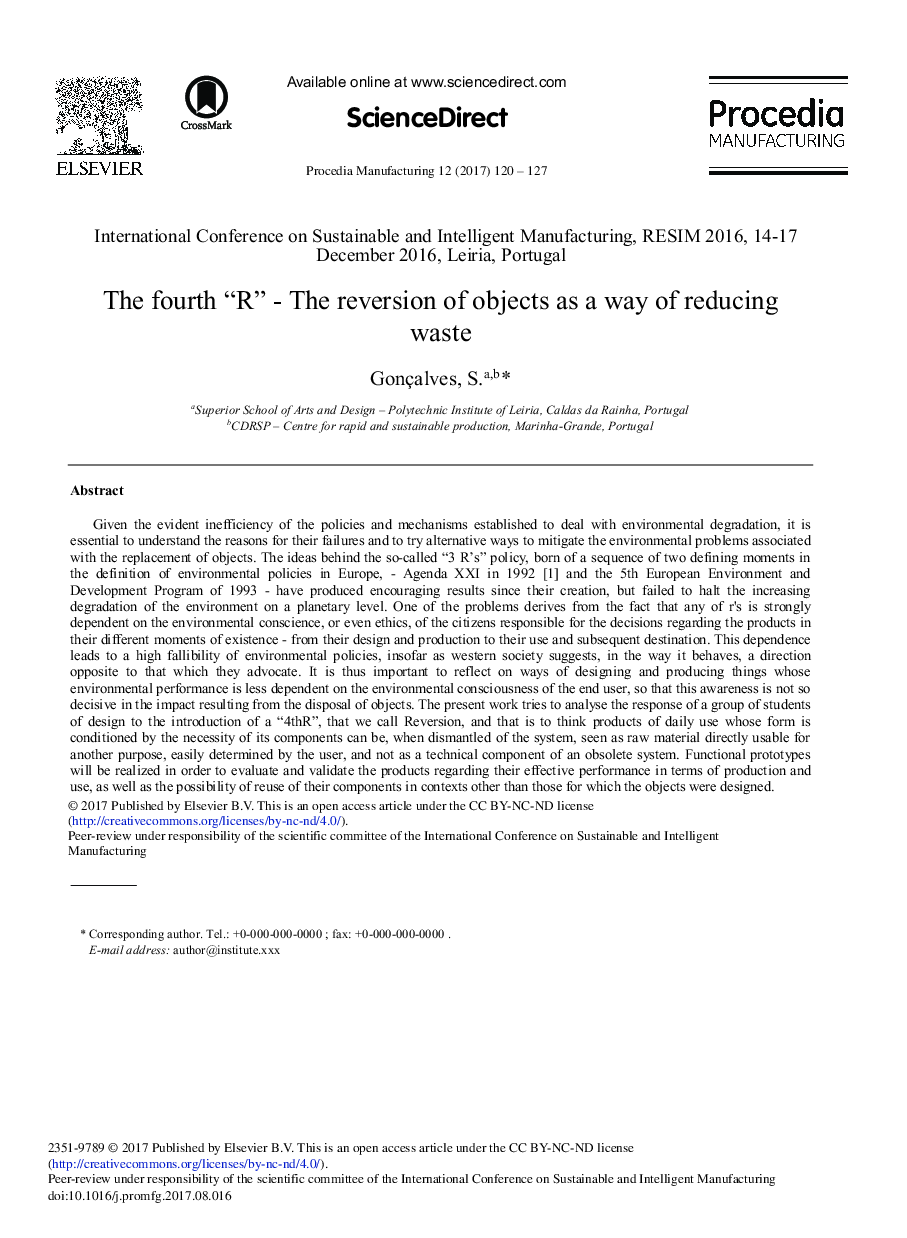| کد مقاله | کد نشریه | سال انتشار | مقاله انگلیسی | نسخه تمام متن |
|---|---|---|---|---|
| 5128618 | 1489600 | 2017 | 8 صفحه PDF | دانلود رایگان |

Given the evident inefficiency of the policies and mechanisms established to deal with environmental degradation, it is essential to understand the reasons for their failures and to try alternative ways to mitigate the environmental problems associated with the replacement of objects. The ideas behind the so-called “3 R's” policy, born of a sequence of two defining moments in the definition of environmental policies in Europe, - Agenda XXI in 1992 and the 5th European Environment and Development Program of 1993 - have produced encouraging results since their creation, but failed to halt the increasing degradation of the environment on a planetary level. One of the problems derives from the fact that any of r's is strongly dependent on the environmental conscience, or even ethics, of the citizens responsible for the decisions regarding the products in their different moments of existence - from their design and production to their use and subsequent destination. This dependence leads to a high fallibility of environmental policies, insofar as western society suggests, in the way it behaves, a direction opposite to that which they advocate. It is thus important to reflect on ways of designing and producing things whose environmental performance is less dependent on the environmental consciousness of the end user, so that this awareness is not so decisive in the impact resulting from the disposal of objects. The present work tries to analyse the response of a group of students of design to the introduction of a “4thR”, that we call Reversion, and that is to think products of daily use whose form is conditioned by the necessity of its components can be, when dismantled of the system, seen as raw material directly usable for another purpose, easily determined by the user, and not as a technical component of an obsolete system. Functional prototypes will be realized in order to evaluate and validate the products regarding their effective performance in terms of production and use, as well as the possibility of reuse of their components in contexts other than those for which the objects were designed.
Journal: Procedia Manufacturing - Volume 12, 2017, Pages 120-127